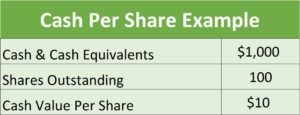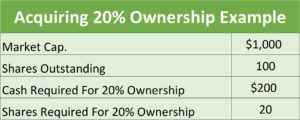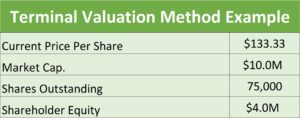If you’re going to invest in corporations through stocks, mutual funds, a 401(k) plan, exchange traded funds (ETFs) or some other means, it’s important to understand the basics of how they work. In keeping with that theme, the purpose of this article isn’t to provide an exhaustive, technical explanation of what a corporation is and how one works, but to focus on fundamental principles related to corporations that you need to understand so that you can be a more informed, knowledgeable investor (or even a potential business owner!).
A corporation is a separate legal entity
A corporation is a legal entity that is recognized in the eyes of the law. That is extremely significant, because as a legally recognized entity a corporation has certain rights, such as the right to own property, to open and maintain bank accounts, to hire employees, to protect its rights in court, and so on. With these rights corporations also have responsibilities, such as the responsibility to pay taxes and to otherwise operate within the law. Finally, a corporation’s ongoing status as a separate legal entity is not automatic. The owners of corporations must make annual filings, pay fees, and follow certain legal formalities.
The owners of a corporation have limited liability
One of the greatest benefits and protections of investing through a corporation is that it provides limited liability to its shareholders. In other words, when it comes to the debts or legal liability of a corporation, shareholders are only at risk to the extent of the value of the stock they own. Said another way, individual shareholders are shielded from the debts and liabilities of the corporation they own.
The fact that shareholders have limited liability does not mean that they (or corporate employees) are exempt from prosecution if they engage in criminal activities. In other words, people who own and operate a corporation cannot evade taxes, intentionally dump chemical waste in the town water supply, or engage in fraud and the avoid criminal prosecution simply by hiding behind “the company.” In all such cases the authorities can criminally prosecute those responsible for breaking the law because it’s recognized that you can only put people in prison, not corporations.[1] Following are some practical examples to illustrate how these principles work.
- You sell bananas out of your home as an individual. If a customer comes over and slips on a banana peel and is injured then you could personally be sued for damages. In other words, if there was a $200,000 judgment against you then you could stand to lose your savings, home, cars, and other assets.
- Assume the same facts as Example #1, except you are the owner of the corporation Deadly Bananas Inc. (“DBI” for short). In that case the clumsy customer could only name the corporation in the lawsuit, not you personally. In the unfortunate event that DBI lost the lawsuit and could not pay the full amount, the clumsy customer could not come after your personal assets such as your home, car, savings, investments, etc.
- You sell bananas out of your home as an individual. You place a large order on your personal credit card. If your business were to fail then you would be personally liable for the credit card balance.
- Assume the same facts as Example #3, except this time, as the owner of Deadly Bananas Inc., you get a loan from a bank to purchase a large shipment of bananas. If the corporation is later unable to pay back the loan then the bank can seek to recover corporate assets to pay it off, but they cannot lay claim to any of your personal assets (assuming you didn’t sign something personally guaranteeing the loan!).
- You steal a massive crate of bananas and purposefully set banana peel traps all over town in an intentional attempt to cause chaos, injury and mayhem. You could be criminally prosecuted for your actions, whether you were acting in your capacity as an individual or as the CEO of DBI.
Corporations have continuity of life
If you run your banana business as an individual, which is technically known as operating a “sole proprietorship,” then the business will die when you do. Granted someone else could step into your shoes and continue to run the same business, but they would be doing business, signing contracts, and developing customer relationships in their name, not yours. On the other hand, if you do business as Deadly Bananas Inc. (you really need to do something about that name) then the corporation will live on as a separate, distinct legal entity as long as it makes the necessary legal filings, pays the appropriate fees, etc. In summary, there are many, many corporations in business today that have long outlived their original owners.
Corporations allow for the easy transfer of ownership
You can easily transfer ownership in a corporation by selling (or giving) the stock in the company to someone else. Because all of the company’s property, contracts and business relationships are already in the name of the corporation, the business can continue to roll on just as it did before; all that’s happened is that the company has a new owner. On the other hand, if someone wanted to by your unincorporated, home-based business, then they would have to do so one asset at a time. And what would you do about liabilities? For example, what if you had a shipment of 10,000 bananas on order? Unless you made special arrangements, that order would still be in your name and you would have to pay for it. But again, if you were incorporated and sold the stock of your company then not only would ownership of the assets transfer with the stock, but responsibility for the debts and other liabilities of the company would transfer as well.
Ownership in corporations can easily be divided
Generally speaking, ownership in a corporation is determined by how many shares you have in the company. The owners of a corporation have the ability to divide their shares, something that provides them with a substantial amount of flexibility in managing the overall structure of the company. Following are some examples to illustrate these principles.
- A company has 10 shares outstanding, and you own 7 of them. That means that you own 70% of the company (your 7 shares divided by 10 total shares).
- Assuming the same facts in Example #1, you want to sell 1% of the company to 3 different investors. The problem is that each share of the company has an ownership percentage of 10%. The solution? You could increase the total shares outstanding by doing a 10 for 1 (or 10-1) stock split. That would increase the number of shares you own to 70 (7 shares x 10) and the total number of company shares outstanding to 100 (10 shares outstanding x 10). Now you could sell one share (each equal to 1% of the company) to 3 different investors, leaving you with 67 shares.
- True or false – By increasing the number of your shares you increase the overall value of the company? The answer is false; stock splits only increase the number of shares outstanding, not the value of the company itself. For example, if a company is worth $100,000 and there are 1,000 shares outstanding then each share is worth $100 ($100,000 divided by 1,000 shares). If the company did a 100 for 1 (or 100-1) stock split then the total shares outstanding would increase to 100,000 (1,000 shares outstanding x 100), but then each share would be worth $1 rather than $100.
Stock can be divided into classes
If all a corporation has is “stock” then it is generally considered to be “Class A common stock.” Each share of Class A common stock has equal voting and economic rights with respect to the company. But other classes of stock can be created which have different voting and economic rights. These principles can be illustrated as follows.
- A couple wants to give shares in their company to their children, but they want to maintain control of the management of the company. They create Class B shares and give these to their children. These shares have equal economic rights to the Class A shares held by the parents, so the children can share in the profits of the company just as if they had Class A shares, but the Class B shares do not have voting rights. As a result, the children do not have a say on who will be officers in the company, or in other major decisions such as whether the company will merge, acquire, or be acquired by another company, etc.
- The owners of a company want to raise additional funds for expansion, but they don’t want to give away a significant amount profit potential in the process. The owners find a group of investors who want a higher potential investment return than what is offered by interest bearing investments, but they don’t want to take on an excessive amount of risk. In this case the owners of the company could issue “preferred stock” to the investors. Generally speaking, preferred shareholders are first in line when corporate distributions are made and are promised a certain rate, but once they receive an agreed upon amount then the rest of the distributions belong to the Class A shareholders.[2]
Corporations can be “publicly held”
One huge advantage of corporations is that they can “go public,” or be “publicly held.” In other words, corporations can be listed on a public stock exchange such as the NASDAQ or the New York Stock Exchange, which enables the shares of the corporation to be sold to the general public. And what is the significance of a company being publicly traded? It means with a little bit of money and a few clicks of a mouse (or a phone call) that you and I can become part owners of any company listed on a stock exchange: Exxon, Walmart, Google, Bank of America, GE, IBM, just to name a few.
While the process going (and remaining) public is long, complicated, expensive, and involves a tremendous amount of work on the part of a company, it also provides extraordinary opportunities. It gives the owners of the company an opportunity to “cash out,” or to sell some of their stock to the public. And for the company as a whole, it provides a means to raise capital (which means raising money) from a huge pool of investors in order to fund projects that will (hopefully) further drive the growth of the company.
Corporate governance
The corporate organization provides a framework to govern the affairs of a company so that it acts in the best interests of the shareholders while also being a responsible corporate citizen. This is primarily done through the board of directors. The shareholders use their voting rights in the company to elect members to the board who then select a chairman. One of the main responsibilities of the board is to select a chief executive officer (“CEO”) to run the day-to-day operations of the company as well as to monitor that person’s performance. Boards of directors generally grant a degree of latitude to CEOs to run a company according to their best business judgment. However, if the company under-performs for an extended period of time and/or engages in questionable business practices then the board has the power to replace the CEO.
As a practical matter, corporate governance is of greater importance in companies whose stock is widely held by many owners as opposed to a company where stock ownership is concentrated. For example, if a shareholder owns 75% of a company then they can effectively make all of the decisions: they can elect all members of the board, appoint themselves as chairman of the board, and even appoint themselves CEO. In addition, no matter how poorly such a “closely held” company performs, the only way a majority owner can lose their job as CEO is if they fire themselves! On the other hand, at a very large company the CEO may own less than 1% of the outstanding stock. In such cases the CEO’s performance and the relationship they have with the board of directors is more important and takes on a greater degree of formality.
As a shareholder you generally want a board of directors to take a balanced approach in overseeing the affairs of the company. On the one hand, you don’t want them so involved that they interfere with the CEO’s running of the day-to-day operations of the company. On the other hand, you don’t want them to be overly passive either, effectively rubber stamping everything the CEO does and asks for. Such an approach creates an environment where there is a sense of complacency and a lack of accountability, which is a recipe disaster. In summary, an effective board is informed and involved, mostly using its position to influence rather than interfere, but also acting decisively when needed to protect the overall interests of the shareholders.
Corporations do NOT have a life of their own
Following on the concept of corporate governance, one final thing I want to point out is that corporations themselves are not inherently good or evil; they don’t make smart or dumb decisions; they don’t hire or fire people; they are neither charitable nor ruthlessly capitalistic. In fact, corporations don’t make any decisions at all. Only the people who are part of corporations can do that.
Applying this concept to one of the examples above, was it really “Deadly Bananas Inc.” or, more generally, “The Corporation,” that deviously spread banana peels all over town in an attempt to wreak havoc on the general public? Of course not, the corporation itself is simply a set of documents locked away in some filing cabinet. No, the real culprit was the individual(s) at the company who was orchestrating all of the mayhem. While it may sound obvious that, for good or bad, people are always behind the acts of corporations, I point it out because it’s a frequently overlooked concept.
Summary: Corporations provide a powerful means to do business and to raise capital
In reviewing all of the above characteristics of a corporation it becomes much easier to see why they’re a very attractive means to do business.
- Separate legal entity – Assets and liabilities can be in the name of the company.
- Limited liability – Shareholders are not personally liable for the actions and debts of the company.
- Continuity of life – A corporation can exist indefinitely.
- Transferability of ownership – Shares of a corporation can be transferred, bought and sold.
- Division of shares – Ownership in a corporation can be divided in an infinite number of ways.
- Corporate governance – Corporations have formal processes to appoint officers and to oversee the business.
For all of the above reasons, a business organized as a corporation has intrinsic value. In other words, even if a corporation had no assets or liabilities, meaning that it was just a shell company, it would still have value in and of itself because it’s organized in a manner that’s extremely effective for doing business…it just needs someone to pull the switch to get the business going. And it’s for all of these reasons that in terms of assets owned, goods and services produced, and people employed, the corporation is the most dominate form of business in the United States (and the world!).
[1] While this is true, it’s also important to note that a corporation as a separate “person” can get hit with legal, administrative and operating sanctions that can hamper its ability to do business. For example, if an oil company has a major industrial accident then the corporation can be hit with fines and/or lose the right to drill in certain areas. In extreme cases a company can even get shut down altogether.
[2] I will write about preferred stock in more detail at a later time. The point I am trying to illustrate for now is that a corporation’s stock can be divided into classes.









